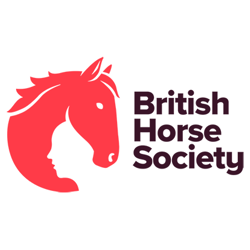Stage 2 Coach
| Learning outcome | Assessment criteria | Guidance on the content to be learnt during training and sampled during assessment | Assessment method |
|---|---|---|---|
| 1. Understand the roles and responsibilities of a coach | 1.1 Explain the roles of a coach |
Roles, to include;
|
Discussion |
| 1.2 Describe the responsibilities of a coach |
Responsibilities, to include;
|
Discussion | |
| 1.3 Describe legal requirements for coaching horse riding |
Legal requirements;
|
Discussion | |
| 1.4 Explain a range of factors to consider when matching a horse with a rider |
Range = 2 or more Factors, to include;
|
Discussion | |
| 2. Understand rider needs | 2.1 Explain the needs of different types of riders |
Different types of riders, to include;
|
Discussion |
| 2.2 Explain how the learning process may affect a rider’s skill development |
Learning process, to include;
|
Discussion | |
| 2.3 Explain factors that may affect rider development |
Factors, to include;
|
Discussion | |
| 3. Be able to coach safely | 3.1 Demonstrate regard for safety |
Coaches must demonstrate safe coaching in all sessions, including consideration of:
|
Observation |
| 4. Be able to demonstrate lesson management skills | 4.1 Demonstrate effective communication skills |
Communication must be effective in all four coaching sessions. Communication skills, to include;
|
Observation |
| 4.2 Demonstrate effective behaviour management skills |
Behaviour management must be effective in all four coaching sessions. Behaviour management, to include;
|
Observation and discussion | |
| 4.3 Demonstrate effective time management skills |
Time management must be effective in all four coaching sessions.
|
Observation | |
| 5. Be able to coach a lead rein lesson | 5.1 Produce a lesson plan |
Lesson for one beginner rider (adult or child) for at least 20 minutes Lesson plan, to include;
|
Discussion |
| 5.2 Describe the process of coaching a beginner rider |
Process, to include;
|
Discussion | |
| 5.3 Coach a lead rein lesson |
Lead rein lesson as detailed in 5.1, to include;
|
Observation and discussion | |
| 5.4 Coach progressive activities to rider |
Progressive activities, may include;
|
Observation | |
| 5.5 Implement suitable adaptations to coaching practices |
Adaptations in relation to;
|
Observation | |
| 5.6 Evaluate own performance |
Evaluate, to include;
|
Discussion | |
| 6. Be able to coach a lunge lesson | 6.1 Produce a lesson plan |
Lesson for a novice rider who is able to walk and trot, 30 minute lesson Lesson plan, to include;
|
Discussion |
| 6.2 Explain how to develop a range of riding skills |
Range = 3 or more Riding skills, to include;
|
Discussion | |
| 6.3 Ensure the horse is lunged safely |
Lunge, to include;
|
Observation | |
| 6.4 Coach a lunge lesson |
Lunge lesson, to include;
|
Observation | |
| 6.5 Coach progressive activities to riders |
Progressive activities, to include;
|
Observation | |
| 6.6 Identify common rider faults and make corrections |
Common rider faults, to include;
|
Observation | |
| 6.7 Implement suitable adaptations to coaching practices |
Adaptations in relation to;
|
Observation | |
| 6.8 Evaluate own performance |
Evaluate, to include;
|
Discussion | |
| 7. Be able to coach an integrated flatwork and jumping group lesson | 7.1 Produce a lesson plan |
Group of three riders for approx. 45 minutes. Novice riders who can walk, trot and canter over related fences up to 75cm Lesson plan, to include;
|
Discussion |
| 7.2 Coach a group lesson |
Group lesson as detailed in 7.1, to include;
Appropriate distances to be used and measured correctly Distances to be adjusted if required during the session |
Discussion and observation | |
| 7.3 Coach progressive activities to riders |
Progressive activities, to include;
|
Discussion and observation | |
| 7.4 Identify common rider faults and make corrections |
Common rider faults, to include;
|
Discussion and Observation | |
| 7.5 Implement suitable adaptations to coaching practices |
Adaptations in relation to;
|
Observation | |
| 7.6 Describe basic school figures |
School figures, to include;
|
Discussion and Observation | |
| 7.7 Coach basic jumping skills |
Basic jumping skills, to include;
|
Discussion and Observation | |
| 7.8 Explain how to develop a range of basic jumping skills |
Range = 2 or more Development, to include;
|
Discussion and Observation | |
| 7.9 Evaluate own performance |
Evaluate, to include;
|
Discussion | |
| 8. Be able to coach a practical stable management lesson | 8.1 Produce a lesson plan |
One participant for at least 15 minutes, session suitable for a person working towards stage 1 level. Lesson plan, to include;
|
Discussion |
| 8.2 Coach a stable management lesson |
Stable management lesson as detailed in 8.1, to include;
|
Observation | |
| 8.3 Identify common faults and make corrections |
Corrections, to include;
|
Observation | |
| 8.4 Implement suitable adaptations to coaching practices |
Adaptations in relation to;
|
Observation | |
| 8.5 Evaluate own performance |
Evaluate, to include;
|
Discussion | |
| 9. Be able to plan for professional development | 9.1 Describe an action plan for own development |
Action plan to develop own performance in the equestrian industry, to include;
|
Discussion |
